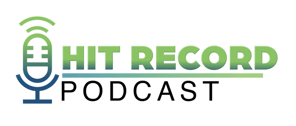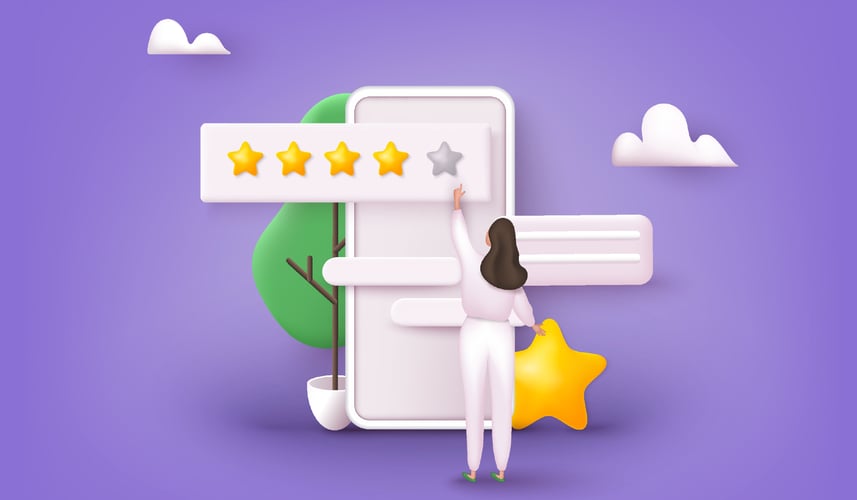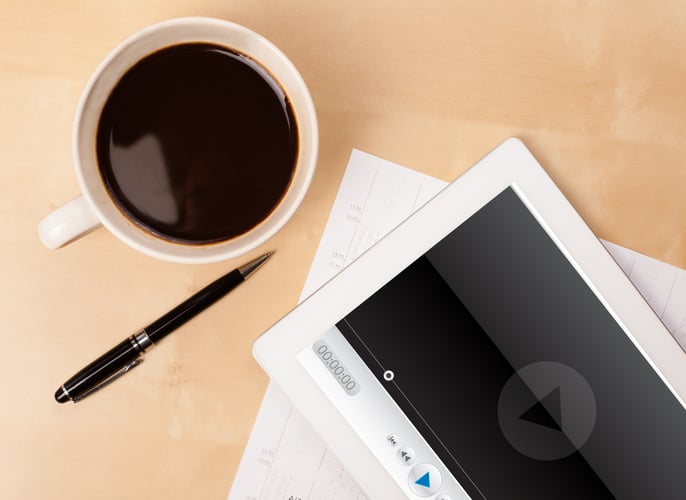Episode 4 - How to Build a Product Page that Actually Converts


Don't Miss An Episode, Subscribe Now

Podcast Episode 4: The FI GROW team discusses how your bank or credit union can build product pages that actually convert.
Transcription:
Have you ever been talking about something that's really useful and thought, "That's a great idea, let's hit record so we can share this with everyone?” If you're looking for best practices for your bank or credit union, join us while we talk all things sales, marketing, and strategy for financial institutions. Let's make it happen with FI GROW Solutions.
Meredith Olmstead :
Hi, there I'm Meredith Olmstead with Figrow Solutions. Welcome back to our hit record podcast. We were just having a great conversation. And I'm here with Penne VanderBush, our chief of strategy, and we're having a great conversation about how to build a product page that actually converts. So I wanted to hit record and just have us share a little bit about what we were talking about. So first of all, what do we mean by convert? I mean, what is a conversion anyway? So Penne what's a conversion?
Penne VanderBush:
So I think, the primary conversion for any product page is that apply now button and moving people into that application. That's absolutely our primary call to action or point of conversion. A lot of the times when you set up your paid social ads, for example, you'll set that apply now button as your conversion metric. But I think what's important to realize is that you don't always have to rely on the apply now button to go to that application for a conversion, because there are other types of conversions and that's for those people who aren't ready to apply yet, but you can convert them as a lead that you can then nurture until they are ready to apply.
Penne VanderBush:
And so we always encourage our clients on every product page to have other forms of lead capture, kind of a most basic one is like an ebook or a checklist and maybe an infographic, some piece of content that someone can download. And then now they're in your system as a lead and you can continue to nurture them. And so I think it's important to understand that the conversion metric is not necessarily always that apply now button, but there are other forms of conversions as well on that product page.
Meredith Olmstead :
Great point, great point. So what else do we need to do? I'm trying to think about when I'm designing a product page or I'm looking at a product page and evaluating that for a client. What would be one of the other things that we would need to make sure that were included or that we weren't doing on a product page that would be like a mistake?
Penne VanderBush:
Yeah. So I think one of the mistakes I see most often is that applied now button is hard to find. A lot of the times it's like at the bottom of that product page and especially on a mobile device, that's a lot of scrolls to get to the bottom of that page to find that apply now button. In our new digital branch builds that we're doing here at FI GROW, we're putting that apply button like, when you land on that product page, you're going to see it. It's going to be somewhere near the top. We're putting the apply... For some clients even have it up in their menu, like in that mega menu. When it pops open, it's like the top line item in that category. But also that apply now button, you'll see all the way down the page, because you never know at which point that website visitor has gotten the right amount of information where they're ready to apply.
Meredith Olmstead :
Yeah.
Penne VanderBush:
So we'll have, it's like in the hero and then we might have some rich text, some bullet points or some features about that product. That's going to have an apply now. You're going to have the rates table. That's going to have an apply now near it. So you're going to see that apply now, button continuously down that page. I think that's one of the big things that gets missed often is forgetting that that primary conversion that you're going after needs to be front and center. And it needs to be repeated down that page often.
Meredith Olmstead :
Yeah. You also mentioned the other idea about having another kind of conversion if somebody's not ready to apply. And one of the ones that I wanted to make sure we mentioned is a lead generating calculator and those are,
Penne VanderBush:
Those are great.
Meredith Olmstead :
We love those. Those are really great. They, number one, there's a couple of really great uses for them. Number one, they can provide a great lead for your sales team to follow up with it. It comes with the amount that somebody might be interested in financing, how much their down payment is. You could even ask for what stage they are in buying a house or a car, something like that. So a really great way for you to generate some actionable leads for sales. And the other thing that I love to see done with those is a nurture email or two that goes out to the person who filled out those calculators.
Penne VanderBush:
Absolutely.
Meredith Olmstead :
To kind of remind them of what their calculations were, give them some information on the product and service itself, next steps for applying. So these are great kind of secondary conversion opportunities if somebody's not ready to apply now, because we know that not everybody is quite ready there. You don't want to lose those opportunities to grab a lead and follow up with them and be helpful at the right time.
Penne VanderBush:
Absolutely. Those calculators are great. We love them. There's so much information they're informative. It puts that information like, you said, that follow up email is so important. So later in the evening, if they want to revisit that email and look at what was it they calculated and what was that payment going to be. It's right in the palm of their hand. They can bring it to a dealership or they can be on the lot shopping and they have it right there in the palm of their hand. And it's such valuable information for that sales or service team to have that lead come in and it pops right up that this person's in market, they're currently shopping, they're looking for a $35,000 auto loan. Like, you know so much about them before you even place that phone call or reach out to help. They're fantastic.
Meredith Olmstead :
Yeah. It gives a great context for lead follow up for sales, for sure. Anything else you can think of that we want to make sure is on a product page that converts?
Penne VanderBush:
Yeah. So I think one key element on a product page is that rates table. So I still see a lot of kind of dated websites that might have that all like, the rates page where all the tables are just kind of on that rates page. And this has actually been quite a interesting discussion that I've had with clients when we talk about building the new site. So really if someone's in market for a product and they're coming to your digital branch and they're looking at that product page, they want to see that rate front and center. They want it right on that page. You don't want to add another click to the process where they go to a page, has multiple rate tables, it's got deposit products and loans products mixed together. They're scrolling, they're trying to find it.
Penne VanderBush:
Then when they find the rate, they have to kind of go backwards in their path to get back to where they can apply for the product. So really making sure those rates tables are on each product page is really important to that experience, the buyer's journey and reducing the number of clicks to get the information they need to make a purchasing decision. That's huge. And we know from some of our clients where we have really good tracking on the sites, that those rate pages are really not... That you might look at your rates page and you say, wow, it gets a lot of traffic. But when you have the ability to track your website visitors, because you have browser cookies in place, you can see that often, it's not a lot of your contacts who are actually visiting that rates page, which leads you to wonder are you really just teeing up your rates for your competitors to jump on and easily see,
Meredith Olmstead :
See them all.
Penne VanderBush:
All of the rates you offer. Because it's not often your general consumer is visiting a site just to look at a giant list of rates and so,
Meredith Olmstead :
Totally true.
Penne VanderBush:
So that's one thing. If your website currently just has a rates page that you're pointing everyone to, I would really encourage you to work with your developer and see what you can do about getting those rates on the individual product pages and in the back end of your website, in that digital branch, push your developer to have one location where you enter the rates in one location that makes it convenient for you and your team. Because that's one thing I hear is that those rates pages are, it's convenient to load the rates because they're all in one place. Well, you should be pushing your development company to give you one place to load those rates, but then the system should be pushing them out to the appropriate product pages,
Meredith Olmstead :
Yeah. Yeah.
Penne VanderBush:
As needed.
Meredith Olmstead :
Great point. Great point. Awesome. Well, I'm so glad we hit record on this conversation. For more information, please visit us at figrow.com. We've got FI GROWTH Academy there that has lots of great courses that we've put together for marketers and financial institutions. And we're going to continue with all of our podcasts and our hit record sessions. So thanks so much. Thanks Penne. And let's go make it happen.








Blog comments